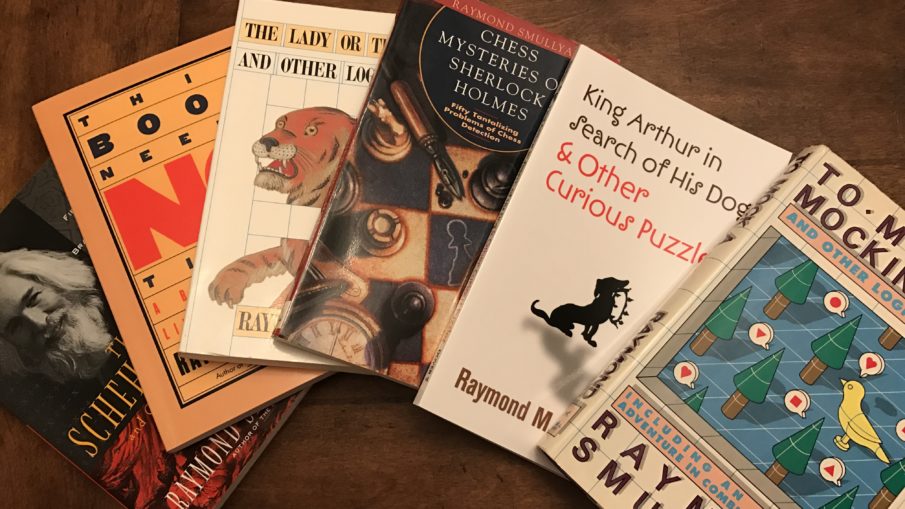2016 rather inured me to the tragedy of celebrity deaths, and when a man dies at age 97 after a life as a mathematician, logician, philosopher of eastern religion, stage magician, pianist, author, husband, and stepfather, it seems more an opportunity to celebrate his life than sink into despondency. Raymond Smullyan is best-known as the author of numerous books of puzzles, often puzzles which make advanced logical concepts accessible to an innocent audience (which is, perhaps, to be expected from a logician who extended Gödel’s Incompleteness Theorems). I recommend these; they exude a playful light-heartedness rare in any discipline, without compromising their depth and quality. Indeed, much of my taste for puzzles was shaped by Smullyan’s work, and several other Stately Play authors joined me in marking his passing. Should you wish to learn more about Taoism, or serious logic, his writing on those subjects is also first-rate.
Among his most famous puzzles were a series of embroiderings of the concept of knights and knaves, individuals who are able to tell only truths (knights) or only falsehoods (knaves). Here is an example, lightly adapted from his The Riddle of Scheherazade:
“A certain town, your majesty, has one and only one town crier. Omar was interested in finding the town crier and narrowed the possibilities down to one of three inhabitants. I do not remember their names, so let us call them A, B, and C. They made the following statements:
A: I am not the town crier.
B: The town crier is a knave.
C: All three of us are knaves.
Is the town crier a knight or a knave?
You might recognize this structure from the 1986 film Labyrinth, in which two doors are guarded by two Jim Henson-created puppets, one of which always lies, and the other of which always tells the truth. It also appears in games and other media often enough to have its own TV Tropes page.
I was particularly tickled by his ideas for coercive logic. The simplest form involves asking for a commitment to answer the next yes-or-no question truthfully yes or no. If you can get someone to agree to that, you can force them to do anything. Your next question need only be of the form, “Will you either answer yes and do x, or answer no and do not-x?” Of course, one quickly learns the limits of people’s commitment to their word if one pushes that too far.
Smullyan was a colleague of my professors at Indiana (where I understand he mentored Will Shortz, another figure who looms absurdly large in the world of puzzles), and it gratifies me on this occasion to share an anecdote told to me by one of them. Smullyan was apparently known for discovering some new magic trick, and eagerly sharing it with others. One day, one of the Philosophy Department secretaries heard a jingling of numerous quarters in a pocket as someone approached. Smullyan entered, and told her “I bet you a quarter I can kiss you without touching you.” Now, she knew perfectly well that he had some trick, but she also figured it was worth a quarter to see him do it, so she sighed, dug out a quarter, and agreed. Smullyan said, “Okay, close your eyes.”
Then he leaned over, kissed her, said “I lose”, and paid up.



Gentleman rogue. Venerated! A toast!
I bet that town crier was shitting himself.